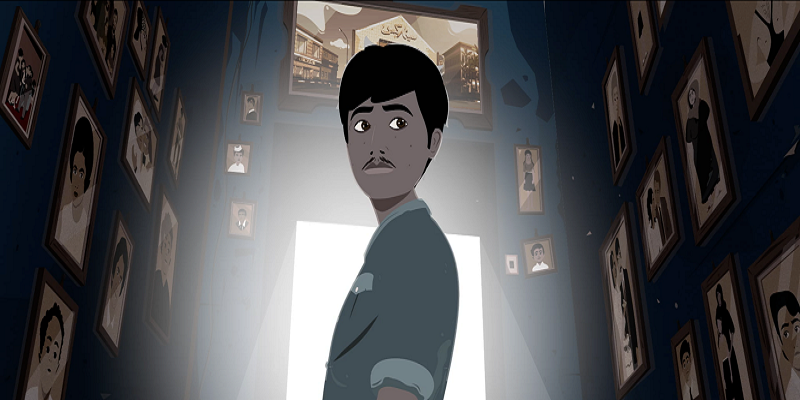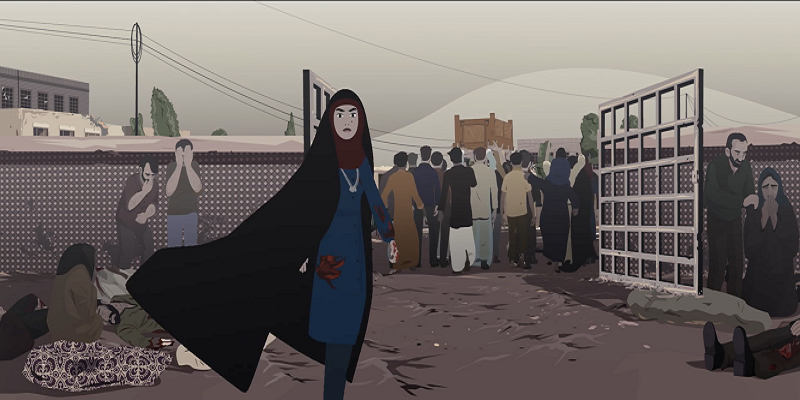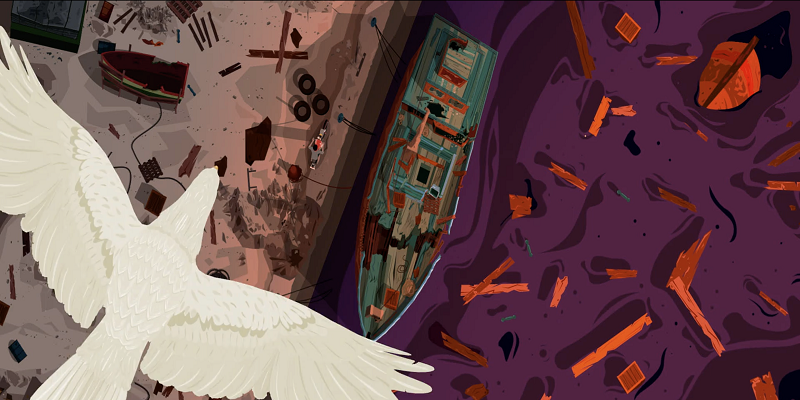The animated Panorama opening film of International Berlin Film Festival will highlight THE SIREN, directed by Iranian director Sepideh Farsi (Teheran Without Permission) this year. The 73rd Berlinale will take place from 16-26 February.
After she directed a dozen documentaries and feature films, Sepideh Farsi set out to make her first animated film, The Mermaid, based on an idea she’d been developing since 2009. Farsi explains that the Iran-Iraq War was one of the bloodiest of the second half of the 20th century, but also one of the least documented.
“I thought it was key to revive this forgotten war that some historians have dubbed ‘the First Gulf War’. I wanted to reflect on those events through the journey of a teenager trying to save the residents of the besieged city of Abadan as he locates a lenj – a traditional ship from southern Iran that he dubs The Mermaid and that becomes his Ark,” she shared in a statement.
The official synopsis reads: 1980, Abadan, Iran. The residents have been defending against a siege by the Iraqis. They include 14-year-old Omid who chose to stay in the city with his grandfather as he waits for his older brother to come back from the frontline. But how can you resist in a war without taking up arms? Omid then finds an abandoned ship in Abadan’s harbour. What if this was the answer to saving the people he cares for?
It was difficult for her to portray the war. The director knew it was impossible for her to return to Iran to make the film as she’s been denied entry since 2009. Abadan, where she grew up, was one of the martyred cities of the war.
“It has been all but entirely destroyed and so it was inconceivable to shoot there as it’s become an altogether different city since the war. I felt like mixing animation and live-action footage based on my own experience. I was going to do an animated feature with a touch of historical facts,” she mentioned.
Like Rithy Panh (The Missing Picture, 2013), she has tried recreating images. Farsi says it is a kind of fight as “the images that were passed down to us had always been created by the authorities. The regime had total control over war footage.” As a result, images were created indeed but they have been manipulated and so Farsi had to be even more watchful and, later on, warn crew members about not duplicating propaganda images.
Farsi is not a designer, but when she met Zaven Najjar in 2014, she found in him the ideal partner. He actually ended up serving as The Mermaid’s art director. For the script she turned to frequent collaborator Javad Djava who has been a persona non grata in Iran, too. In 2015, she met with the Films d’Ici team and The Mermaid could actually get off the ground.
As the script got perfected, Farsi chose to tell the story of a broken young generation that, as they were grappling with the war, struggled between the nostalgia of what life could have been like in an Iran that had gotten rid of its warmongering powers-that-be and the urgency to leave Abadan that gradually turned into a deathtrap. The script grew and developed and so did the graphic design moodboard.
“We paid great heed to each and every detail – the makes of cars that people actually drove at the time, billboards in movie theatres, watches, shoe models. From a screenwriting and visual standpoint, the pace of the animation process is much different from that of live-action film. It takes a long time to develop an animated film,” she said.
In the opening sequence, the audience will discover the Zār sacrificial ritual that serves as exorcism.
“This ritual used to be performed in southern Iran and also in Egypt and in the Horn of Africa. The atmosphere of that scene feels like it’s populated with Jinni and supernatural spirits. For me that scene serves as the beginning of a tale. Because despite the war going on, we’ll follow the boy’s journey,” the director said.
The director has scattered many symbols that the audience will relate to in different ways. A good example is the highly intense scene where Pari, a girl that Omid meets after an accident, chooses to take off her veil to put a tourniquet on Farshid’s wounded leg. This move strongly echoes today’s Iran.
“The film takes place in 1980 and I felt like reminding that people have been fighting against the regime since the beginning. There had already been social upheavals before – back in 1999, then in 2009, 2017, 2019 before the one that broke out in 2022. And the government’s response has always been repression, violence and terror. We’ve had ups and downs, moments of despair. But we knew things were going to blow up one day.”
The setting of Abadan also inspires hope as the city had been brutally besieged as soon as the war broke out in 1980. Although it was all but entirely destroyed and drained of its population during the war, the city population is back to over 200, 000. This is a story of Iranian resilience.
The hypnotic beat of the Dammam – the traditional drum – is heard as soon as the film begins. It serves as an overarching motif that informs the whole plot and shows the diversity of Iran’s soundtrack – Ney-anban (a kind of Iranian bagpipe), pop rock, Armenian organ music, and even the Grendizer TV show’s soundtrack. For this rich score, Farsi turned to Iranian musicians and also to French trumpet player and composer Eric Truffaz who’d already scored Farsi’s 2019 ( I Will Cross Tomorrow). The jazzman incorporated the rich Iranian patterns into his own compositions. It feels like this musical abundance is a nose-thumbing gesture towards the regime that has nothing but contempt for it.
In 2022, Farsi’s father passed away in Iran and the film pays him tribute. He’s the one that took his daughter to Abadan for the first time when she was very young – a city with which she has developed a very special relationship even though she never actually lived there. The city helps the director show how Iran’s move towards modernity was cut short.
Based on this premise, the director combines fiction with her own memories, including a scene of a movie theatre that was actually set on fire, with over 400 casualties or a fake episode ofGrendizer being watched by Iranian and Iraqi people. It’s close to a treasure hunt fueling emotion in which even names give away clues: Omid means ‘hope’ and Pari means both ‘mermaid’ and ‘siren.’
“I’d like this film to be seen in Iran and elsewhere. The fact that it was selected for the Berlin Festival is a good opportunity to gain visibility. In Iran, people always manage to see films, including mine that were banned by the regime. The film will either be seen on pirated copies or on a big screen because the regime will already be overthrown. I’ve been used to it since Red Rose. But even if I cannot mention their names, I think about them. I’ve also made this film for them”, she concluded




